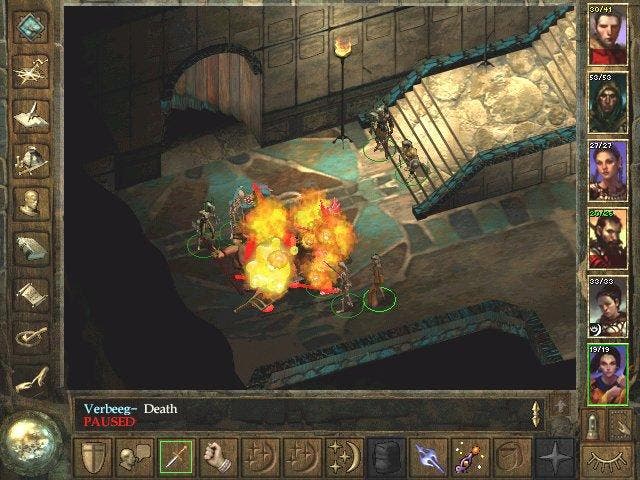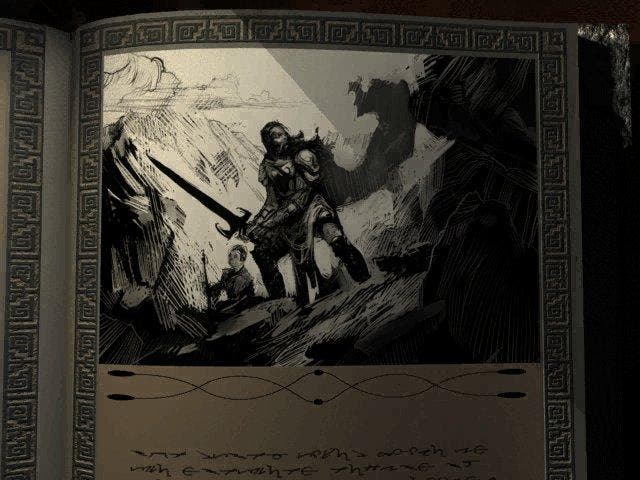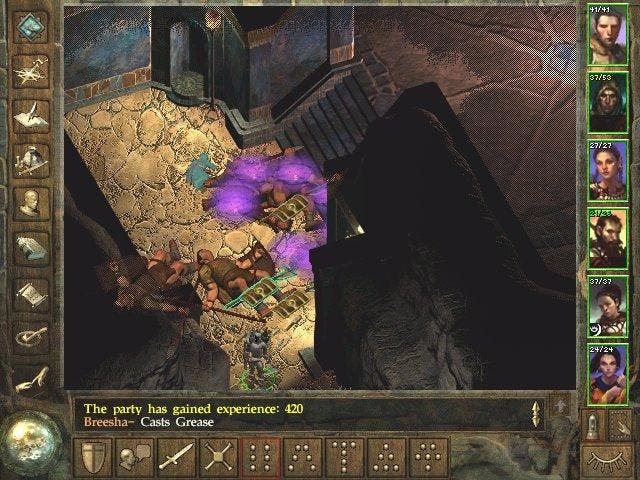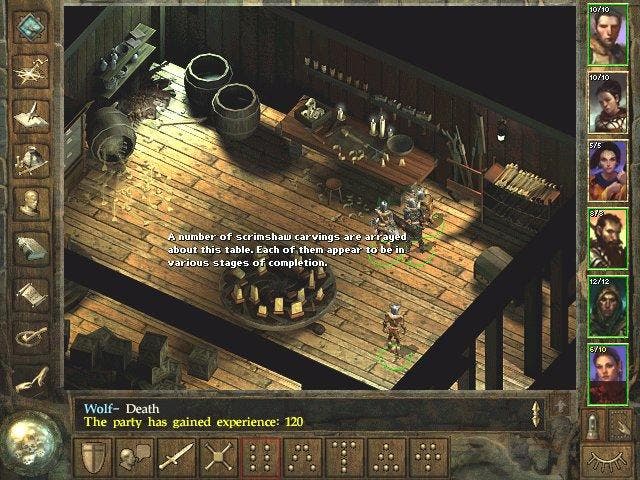Icewind Dale
Hack 'n' slash RPG reviewed

The Frozen North
It's been a long and arduous wait for the horde of PC role-players eagerly awaiting a sequel to the classic Baldur's Gate, but now some relief can be had in the form of Icewind Dale.
Based on the Infinity Engine which drove Baldur's Gate, and developed by Black Isle Studios, the brains behind the critically acclaimed "Planescape Torment", like its forebears Icewind Dale is based on the hugely popular Advanced Dungeons and Dragons Second Edition game rules, with the computer taking over the laborious task of Games Master and looking after all of the dice rolling for you.
The game's setting and plot have been faithfully re-created from the popular Forgotten Realms campaign set, and based on the original Icewind Dale AD&D adventure modules and accompanying novels by Robert Salvatore. Icewind Dale itself is a frozen and unforgiving land in the north of the Forgotten Realms, cut off from the rest of the world by a foreboding mountain range known as the Spine of the World.
Your party has travelled to these parts in search of adventure and, in the spirit of many good adventures, begins in a tavern in the town of Easthaven. After several small introductory quests, your intrepid band of adventurers soon move on to more hostile regions in their journey through the Dale. Each of the six large chapters in the game are introduced with stylish cut-scenes, accompanied with a quality narration and a truly epic musical score that greatly enhances the atmosphere of the game.

Character Creation
Unlike in Baldur's Gate and Planescape Torment, where you controlled a single main character and other people joined your party as you progressed through the game, here you must create all of the required members of the party at the start of the game, and have full control over each of them from the beginning.
This initial creation process, involving selection of class, race, skills and alignment, as well as much dice rolling for stats, is fairly lengthy, and can be a drag when you are dying to just get stuck into the game. Each of your party members can also be customised with a wide choice of clothing and hair colour, and a stylish portrait selected from a pretty comprehensive range of choices. More artistic players can even import their own creations into the game.
These initial decisions are extremely important however, as Icewind Dale is very heavy with combat, and building a well balanced party is essential for a successful adventure. Bad decisions at this stage can be rectified later by dropping a party member and recreating them, but the newcomer will then have to start off as a level one weakling, and will probably be as much use as a third leg to your more advanced and experienced characters.
Pre-rolled characters can be selected for people finding this whole process rather daunting, but it's far more satisfying to build your own group - your team is a pretty weak bunch initially, but watching them grow from green adventurers to extensively equipped monster destroying machines is extremely compelling.

Quest
While there are plenty of quests and tasks that drive the plot along and keep your party busy, most of the game is spent battling your way through dungeons and picking fights with the residents. These battles are fought in real time, but to be really successful you will need to make heavy use of the pause button. This gives you time to issue orders, select spells, or move a wounded character to safety, making skirmishes quite strategically involved.
The style of combat changes significantly as your team advances through the game. Early on your characters are pathetically weak and ill-equipped, and so can take very little damage, making ranged weapons and fast retreats the best course of action. But as your party advances through the levels, your spell casters become magical powerhouses, dishing out massive damage, with your fighters acting like tanks, with strong armour and lots of hit points, to keep monsters away from your damage dealing mages. The engine copes perfectly with this change, and it keeps the combat fresh and tactically interesting.
One oddity though is that the monsters don't heal when your party withdraws and rests, so you can break off, heal up, then dive back in and pick up where you left off, which is a little unrealistic. Another problem is the penalty for death, which means a trip to a priest and a reduction in your resurrected character's constitution, so that you end up saving the game before a fight and then reloading as soon as someone falls.

To Infinity .. And Beyond!
Fans of previous Infinity Engine games, such as Baldur's Gate or Planescape Torment, will find the point and click interface instantly familiar. Your characters are directed about the screen with the mouse, with a single click on an enemy initiating attacks, and spells selected by clicking on the appropriate icon at the bottom of the screen.
It's not a perfect system - selecting characters and destinations can be a bit clumsy, and your party often gets confused about which route to take around certain objects, but its limitations are easily dealt with, and it doesn't hinder the game significantly.
While the Infinity Engine hasn't received many new features for Icewind Dale, there are a few significant improvements that make a real difference. Most notable is a subtle option to grant maximum hit points each time a character levels, which negates the necessity to save the game before levelling up to counter a bad upgrading dice roll.
Black Isle Studios have also added greatly to the range of enemies that you encounter, especially with larger foes like Trolls, Cyclopses and Ice Giants, which look suitably huge as they stomp towards your relatively short bunch of adventurers.
Apart from these changes, nothing visually or operationally is significantly different from the original Baldur's Gate though. The game still runs at 640x480, and your characters are still fairly small and not particularly intricate or detailed. The backdrops are impressive however, and the large number of dungeons, crypts and vaults to explore gives a fantastic variety to the visuals.

Conclusion
Icewind Dale isn't an earth-shatteringly original game, but the overall package is so skilfully crafted that this doesn't matter one iota. The combat intensive dungeon romping is fantastic fun, and recreates the table top AD&D experience like no other game before it.
Character progression is perfectly balanced, so that battles are challenging without being too easy or frustratingly hard. The storyline is a paint by numbers fantasy affair, but really only serves to link the dungeons and battles together as your party dives onward, hacking and slashing their way through the land.
Cleverly the plot always applies itself to the enemies you are fighting in a way not often displayed by role playing games. Skeletons have been placed in a crypt to defend their master's soul, giants are throwing themselves at you to defend their allies, and this makes things far more interesting than enemies placed in dungeons simply to get in your way and give you something to chop away at.
Baldur's Gate 2 will have to be pretty special to better Icewind Dale, and role-players have never had it so good.
-
